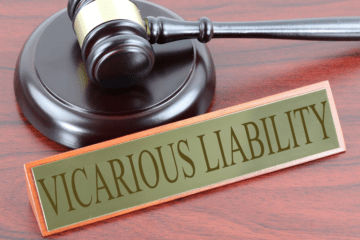
This Article is written by Vamakshi Pareek, 2nd Year, BA.LL.B., RNB Global University, Bikaner.
Introduction
The term ‘Tort’ is a French word and has been derived from the Latin term ‘Tortum’, which means a wrong or injury. Generally, tort is a civil wrong, and means something which is twisted or crooked.
In law, a tort is defined as a civil wrong or wrongful act of one, either intentional or accidental, that results in the injury or harm to another person, who in turn has recourse to civil remedies for damages or a court order or injunction.
A tort basically arises when a person’s duty towards is affected. And a person who commits the tort is known as a ‘tortfeasor’. But when it us jointly performed by multiple individuals; they are called ‘Joint Tortfeasors’. Section 2(m) of the Limitation Act, 1963, states that it is not just exclusively a breach of contract or breach of trust.
Definition of Tort by different Scholars
Salmond defines it as ‘a civil wrong for which the remedy is a common law action for unliquidated damages, and which is not exclusively the breach of a contract or the breach of a trust or other merely equitable obligation.’
Fraser describes it as “an infringement of a right in rem of a private individual, giving a right of compensation at the suit of the injured party.”
Winfield opined that “Tortious liability arises from the breach of duty, primarily fixed by law, this duty is towards persons generally and its breach is redressable by an action for unliquidated damages”.
What constitute a tort?
- Wrongful Act: It means there must be some kind of act or omission of duty on the part of the defendant or wrongdoer. He must have done something that he was not expected to do or he omitted something which he was expected to do. And that act or omission must have affected the legal right (i.e. Right of reputation or Right of bodily safety and freedom, etc.) of another person.
- Legal Damage: It means that the act or omission must be required by the law and the duty to perform them must be imposed by the law. If there is a mere social or moral wrong, then there would be no liability for tort. In other words, there should be a legal injury or invasion of the legal right. In the absence of an infringement of a legal right, a tort dose not arises. Also, where there is only an infringement of a legal right, and no legal damage, still the action of tort arises. As in the case of Ashby Vs. White, where the Plaintiff was stopped from casting his vote by the defendant, a returning offer. However, the cancellation did not affect the election but it affected the legal right of the plaintiff causing legal injury to him, so he would be entitled to sue the defendant for the tort committed.
- Legal Remedy: The third condition of liability for a tort is legal remedy. This means that to constitute a tort, the wrongful act must come under the law. The main remedy for a tort is an action for unliquidated damages, although some other remedies, e.g., injunction, may be obtained in addition to damages or specific restitution may be claimed in an action for the detention of a chattel. Unliquidated damages are those which are not fixed or previously defined, which relies on the discretion of the court.
Is it Law of Tort or Law of Torts?
There are two theories in this question. One is given by Winfield and the other is given by Salmond.
According to Winfield, it is Law of Tort, he states that all the injuries done to another person are torts, unless there is some justification by the law (all unjustifiable harms are torts). His theory was supported by many eminent scholars with the principle of Ubi Jus Ibi Remedium (where there is wrong, there is a remedy), providing that torts are not confined or limited but are various.
According to Salomon, it is Law of Torts, he states that there is no general principle of liability and it only arises when the wrong is covered by any of the specified tort. Also known as Pigeon hole theory. His supporters argued that according to Salmond, the courts can create new torts but they cannot create them unless they are similar to those already in existence.
It can be seen that both the theories are not in complete contradiction with each other but are the faces of same coin. The slightest difference is that Winfield’s theory was wider and Salmond’s theory was narrower and restricted. It is just only about the matter of approach.
Development of Law of Tort in India
The Origin of law of Torts could be traced from the following three maxims:
- Alterium non-laedere (not to hurt anyone by words or deeds)
- Honesty Vivere (to live honourably)
- Suum clique tribuere (to provide justice to each person)
The law of torts has its origin in England but is followed in the US, British commonwealth nations and India. Previously, in the US, the law used to deal with the minor cases, like that of accidents. But now seeing the diversity in the cases, the jurists and lawyers decided to further develop the law of torts.
The English Law of Torts has a lot of dominance over the Indian law of tort, which was modified as per the requirement of the Indian society. The ancient Hindu Law consisted of a Sanskrit word, ‘Jimha’ which meant equivalent to the tortious conduct.
In the earlier times the Britishers found it difficult to administer Indians, so they decided to an Indian Tort Law, to avoid chaotic situation.
Tort is basically a common law subject as it is not based on any statute or act passed by the parliament, but is based on the precedents, the centuries of judicial decisions. Like in India, both contract and criminal law are based on the statutes like Indian Contract Act, 1872 and IPC, 1860, respectively. But there are no specific statutes that deal with the tort law. So, a tort lawyer would have to look for rules as developed by courts in similar cases.
However, with the development, India has developed certain tort laws, like Motor Vehicles Act, 1988 to deal with automobile accidents and also Consumer Protection Act, 1986 to protect the interests of the consumers. Still most of the tort law is uncodified and is based on the Common law of England. At times when the common law is silent, the courts apply principles of Equity, Justice and Good Conscience.
Also, in the landmark case of M.C. Mehta Vs. UOI, Justice P.N. Bhagwati observed the importance of having one’s own law and how it helps for further development and growth of the nation, rather than relying on the ancient law of England.




0 Comments